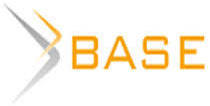The donor behavior of the “third sector” under the control of compassion
The article examines the non-profit and voluntary sector, also known as the third sector economy, which plays a key role in ensuring sustainable human and environmental well-being in order to overcome critical situations of poverty, resource depletion, social security and social exclusion. One way to develop and maintain this sector is to receive contributions and donations from other organizations or individuals. Drawing on a revised theory of planned behavior, this study attempts to investigate what motivates people to sacrifice, and determine whether compassion plays a moderating role. Based on the structural model, the results indicate that attitudes, perceived behavioral control, descriptive norm, and moral norms are significant predictors of donor behavior. In addition, the relationship between the moral norm and the donator's behavior is stronger when compassion is higher. The results would be useful in developing strategies to strengthen the non-profit and voluntary sector by focusing on socio-psychological attitudes for and from others. Since the study did not control the size of non-profit organizations, we suggest that in the future we consider a restriction that would be consistent with the "philanthropy impact model", which postulates the maximum impact of a donation, especially for sustainable well-being.

















While nobody left any comments to this publication.
You can be first.
Ajzen, I. (1991), “The theory of planned behavior”, Organizational Behavior and Human Decision Processes, 50 (2), 179-211.
Armitage, C. J., Conner, M. (2001), “Social cognitive determinants of blood donation”, Journal of Applied Social Psychology, 31 (7), 1431-1457.
Borzaga, C., Defourny, J., (2001), From third sector to social enterprise, Routledge, London and New York.
Chen, L. (2017), “Applying the extended theory of planned behaviour to predict Chinese people's nonremunerated blood donation intention and behaviour: The roles of perceived risk and trust in blood collection agencies”, Asian Journal of Social Psychology, 20 (3-4), 221-231.
Cox, J., Nguyen, T., Thorpe, A., Ishizaka, A., Chakhar, S., & Meech, L. (2018), “Being seen to care: The relationship between self-presentation and contributions to online pro-social crowdfunding campaigns”, Computers in Human Behavior, 83 (6), 45-55.
Defourny, J., Hulgard, L., Pestoff, V. (2014), Social enterprise and the third sector: Changing European landscapes in a comparative perspective, Routledge, London.
Diamantopoulos, A., Siguaw, J. A. (2006), “Formative versus reflective indicators in organizational measure development: A comparison and empirical illustration”, British Journal of Management, 17 (4), 263-282.
Fornell, C., Larcker, D. F. (1981), “Evaluating Structural Equation Models with Unobservable Variables and Measurement Error”, Journal of Marketing Research, 18 (1), 39-50. DOI: https://doi.org/10.1177%2F002224378101800104
Gilbert, P., Catarino, F., Duarte, C. et al. (2017), “The development of compassionate engagement and action scales for self and others”, Journal of Compassionate Health Care, 4 (1), 4. DOI: https://doi.org/10.1186/s40639-017-0033-3
Giles, M., McClenahan, C., Cairns, E., & Mallet, J. (2004), “An application of the Theory of Planned Behaviour to blood donation: the importance of self-efficacy”, Health Education Research, 19 (4), 380-391.
Gold, A. H., Malhotra, A., & Segars, A. H. (2001), “Knowledge management: An organizational capabilities perspective”, Journal of Management Information Systems, 18 (1), 185-214.
Gu, J., Cavanagh, K., Baer, R., & Strauss, C. (2017), “An empirical examination of the factor structure of compassion”, PLoS ONE, 12 (2), DOI: https://doi.org/10.1371/journal.pone.0172471
Hair, J. F., Black, W. C., Babin, B. J., & Anderson, R. E. (2014), Multivariate data analysis. Pearson Education Limited, Harlow, UK.
Hair, J. Ringle, C. M., Sarstedt, M. (2011), “PLS-SEM: Indeed a silver bullet”, Journal of Marketing Theory and Practice, 19 (2), 139-152.
Henseler, J., Ringle, C.M., & Sarstedt, M. (2015), “A new criterion for assessing discriminant validity in variance-based structural equation modeling” Journal of the Academy of Marketing Science, 43 (1), 115-135.
Kashif, M., De Run, E. C. (2015), “Money donations intentions among Muslim donors: an extended theory of planned behavior model”, International Journal of Nonprofit and Voluntary Sector Marketing, 20 (1), 84-96.
Kline, R. B. (2004), Principles and practice of structural equation modeling, Guildford, New York.
Pallant, J. (2011), “SPSS survival manual: A step by step guide to data analysis using IBM SPSS, 6th ed. edn: Mc Graw Hill Education: New York”. PLOS ONE, 12 (2), 140-159.
Podsakoff, Ph. M., Organ, D. W. (1986), “Self-reports in organizational research: Problems and prospects”, Journal of Management, 12 (4), 531-544.
Ramayah, T., Cheah, J., Chuah, F., Ting, H., & Memon, M. A. (2016), Partial least squares structural equation modeling (PLS-SEM) using smartpls 3.0: An updated guide.
Smith, J. R., McSweeney, A. (2007), “Charitable giving: The effectiveness of a revised theory of planned behaviour model in predicting donating intentions and behaviour”, Journal of Community & Applied Social Psychology, 17 (5), 363-386.
Strauss, C., Taylor, B. L. T., Gu, J., Kuyken, W., Baer, R., Jones, F., & Cavanagh, K. (2016), “What is compassion and how can we measure it? A review of definitions and measures”, Clinical Psychology Review, 47, 15-27.
Tangney, J. P., Jeff, S., & Mashek, D. J. (2007), “Moral emotions and moral behavior”, Annu. Rev. Psychol., 58, 345-372.
Van der Linden, S. (2011), “Charitable intent: A moral or social construct? A revised theory of planned behavior model”, Current Psychology, 30 (4), 355-374.
The author thanks Svetlana P. Ivanova, PhD in Economics, Associate Professor of the Institute of Foreign Languages, Modern Communications and Management, Moscow State University of Psychology and Education, for her help in the work on the article.